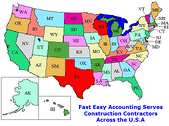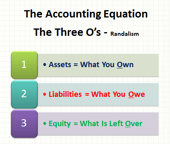A Practical Guide for Contractors Who Want to Stay Profitable—Without Scaring Off Business
If you're like most small construction business owners, you've probably had this thought:
"I'm working non-stop, but I'm still barely keeping up—should I raise my prices?"
And then right after that, the fear kicks in:
"What if I lose clients? What if no one can afford me anymore?"
As construction bookkeeping specialists, we hear this frequently. Contractors are nervous to raise their rates because they worry it'll cost them jobs or damage their reputation. But here's the truth:
Raising your rates isn't about greed—it's about survival.
In this post, we'll guide you through understanding when it's time to increase your rates, how to do it without losing your best clients, and how your books can provide the data and confidence to price with clarity.

Why Contractors Hesitate to Raise Rates
Let's start with the everyday fears:
- "My clients won't pay more."
- "I'll lose out to cheaper competition."
- "What if I price myself out of the market?"
These fears are common, but often based on assumptions rather than data.
Low rates can hurt your business more than help it. They lead to:
- Burnout from overwork
- Poor-quality clients who expect a lot and pay late
- Inability to reinvest in tools, help, or marketing
- Projects that cost more than they bring in
So let's flip the script. Instead of fearing a rate increase, let's explore how to raise with purpose—and use facts, not fear, to guide your pricing.
1. Start with Job Costing
Before raising rates, you need to know one thing clearly:
Are you actually making money on your jobs?
Job costing is the process of tracking:
- Labor hours (including your own!)
- Material and supply costs
- Subcontractor fees
- Equipment and tool usage
- Permits, dump runs, gas, insurance
- A share of your overhead (office, truck, phone, software)
Once you tally this up, compare it to what you charged. If you're seeing slim margins—or worse, negative ones—you're undercharging.
Bookkeeper's Tip: Start by reviewing your last 5–10 jobs. Break them down into:
- Estimated vs. actual cost
- Hours quoted vs. hours worked
- Gross profit (before overhead)
- Net profit (after overhead)
Even a simple spreadsheet can help you see which jobs are winners—and which ones need a pricing tune-up.
2. Watch for These Signs - It's Time to Raise Rates
Still unsure? Here are seven signs it's time to raise your prices:
1. You're booked out for weeks (or months)
This means demand is high, and your pricing may be too low. If people are lining up, a modest increase won't deter them.
2. You're working too hard for too little
If you're exhausted, working weekends, and still not taking home enough, your rate is too low. Period.
3. You haven't raised your prices in over a year
Material costs, fuel, insurance, and labor have all increased. If your rates haven't changed, you're likely absorbing the difference.
4. Your quality has improved
Are you more skilled than when you started? Do you offer better results, smoother communication, or cleaner job sites? Then you should be charging for it.
5. You're attracting low-quality clients
If you constantly deal with haggling, late payments, or poor communication, your pricing is attracting bargain hunters rather than quality clients.
6. Your tools, overhead, and team cost more
Running a legit business costs money. If you're licensed, insured, and invest in quality, your rates should reflect that.
7. You're turning away work
If you're saying no to jobs because you're too busy, that's a strong sign it's time to raise your prices and focus on higher-value projects.
3. How to Raise Rates Without Losing Good Clients
You don't need to double your rates overnight or announce a price hike in bold letters. Here's how to do it strategically and professionally:
A. Start with New Clients
This is the easiest path. Quote your new price to new inquiries in the future. They won't know the old rate, so there's no resistance.
B. Add Value, Not Just Cost
When raising rates, remind clients of what they're getting:
- Better project management
- Faster turnaround
- Clearer communication
- Higher quality materials
- Insured and dependable work
Frame your pricing as an investment, not just a fee.
C. Offer Tiers or Packages
For price-sensitive clients, offer a few levels of service:
- Basic (bare-bones scope)
- Standard (your usual full-service)
- Premium (extras like design, faster turnaround, etc.)
This helps clients self-select based on budget without forcing you to underprice your work.
D. Phase In Rate Increases
If you work with repeat clients, give them a heads-up:
"Due to rising material and labor costs, I'll be increasing my hourly/project rates starting [date]. I wanted to let you know in advance so we can plan accordingly."
Most reasonable clients will understand, especially if you've consistently delivered value.
4. Use Pricing Psychology to Your Advantage
Pricing is part math, part mindset. Here are a few tactics to make your price increases feel smoother:
- Avoid round numbers
Instead of $1,000, say $1,175 or $3,950. It feels more calculated, not random.
- Anchor with options
Show your higher price next to a more expensive (or less valuable) one. This frames your offer as the "just right" choice.
- Include a price breakdown.
Show labor, materials, subs, overhead—so clients understand what goes into your rate.
- Be confident
Clients can sense uncertainty. If you hesitate or over-explain, it creates doubt. Quote clearly and stand behind your values.
5. Track What Happens Next
After you raise rates, keep an eye on:
- Win/loss rate (are fewer clients saying yes?)
- Job profitability (are you keeping more after costs?)
- Client satisfaction (any change in feedback or reviews?)
- Hours worked vs. income (are you earning more with less hustle?)
Often, you'll find you're getting fewer clients, but better ones. And that's the goal: less chaos, more profit, and more control over your schedule.
Final Thoughts
You Deserve to Be Paid for What You're Worth
You started your business to build freedom, not to be overworked and underpaid.
Raising your rates isn't risky when data, systems, and experience back it. It's a sign of growth and professionalism. The right clients will respect it, and you'll finally start seeing the kind of income and balance your hard work deserves.
Need Help Understanding Your Numbers Before You Raise Rates?
As a construction bookkeeping specialist, we help contractors:- Break down job costs
- Analyze profit margins
- Clean up financials
- Set pricing that actually works
As we always say, Contractors like you deserve to be wealthy because you bring value to other people's lives. You don't need more jobs. You need the right jobs at the correct rate. Let's get you there.
About The Author:
 Norhalma Verzosa is a Certified Construction Marketing Professional and serves as the Web Administrator of Fast Easy Accounting, located in Lynnwood, WA. She holds a Bachelor's Degree in Psychology and is a Certified Internet Web Professional, with certifications in Site Development Associate, Google AdWords Search Advertising, and HubSpot Academy. She manages the entire web presence of Fast Easy Accounting using a variety of SaaS tools, including HubSpot, Teachable, Shopify, and WordPress.
Norhalma Verzosa is a Certified Construction Marketing Professional and serves as the Web Administrator of Fast Easy Accounting, located in Lynnwood, WA. She holds a Bachelor's Degree in Psychology and is a Certified Internet Web Professional, with certifications in Site Development Associate, Google AdWords Search Advertising, and HubSpot Academy. She manages the entire web presence of Fast Easy Accounting using a variety of SaaS tools, including HubSpot, Teachable, Shopify, and WordPress.
OUTSOURCED ACCOUNTING FOR
THE BUSY CONTRACTOR
IN A MOBILE ENVIRONMENT

|

|

|

|
Download the Contractors APP today from the App Store or Android Store
Access Code: FEAHEROS
Click here to download the App on Android:
Click here to download the App on iOS:
Simply scan the QR code or search for ‘MyAccountants’ in the App Store and enter the Access code: FEAHEROS to utilize the powerful App features and capabilities and benefit from having our Construction Accounting App at your fingertips, 24/7."
PS: Even if you are not a Construction Contractor, you will find plenty of benefits in the app, so we invite you to download it, too! It's Free, so why not?




























